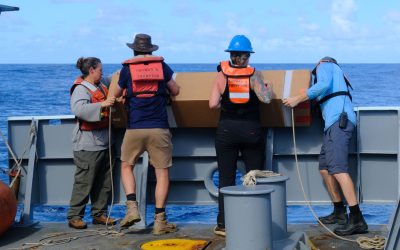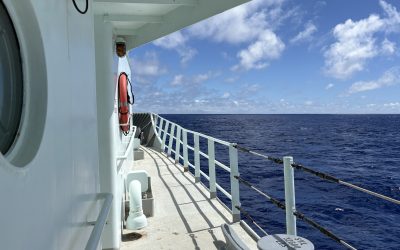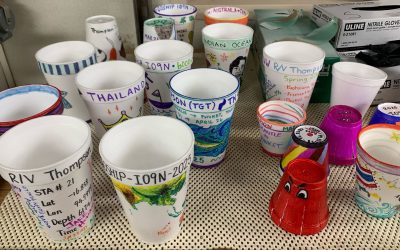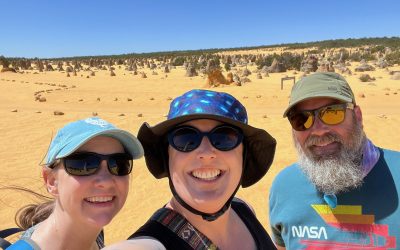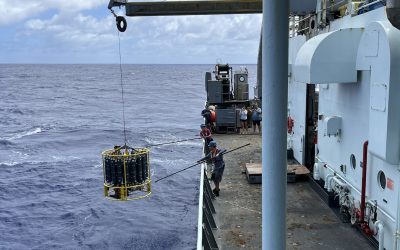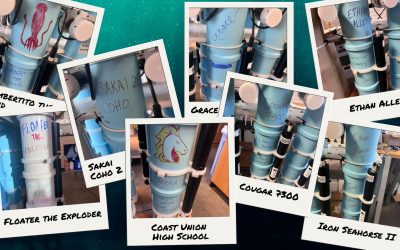2025 GO-SHIP I09N
Decadal re-occupation the 95°E meridian into the Bay of Bengal to 18°N aboard the R/V Thomas G. Thompson
The U.S. Global Ocean Ship-based Hydrographic Investigations Program (U.S. GO-SHIP) is part of the international GO-SHIP program, which carries out a systematic and global re-occupation of select hydrographic sections. The I09N line crosses the Indian Ocean and was previously sampled in 1995, 2007, and 2016. After first filling a gap left by the 2024 I08S occupation, I09N will extend northward along the 95°E meridian into the Bay of Bengal to 18°N.
The specific goals of this cruise are as follows:
- Re-occupation of the historic stations in this line. Roughly 122 stations, sampling water from a CTD rosette from near the surface to just off the seafloor
- A second cast dedicated to biological measurements at select stations throughout the line
- Deployment of 8 GO-BGC biogeochemical floats that measure properties like chlorophyll, nitrate, and oxygen in addition to temperature and salinity
- Deployment of 12 core Argo floats
- Deployment of 10 drifters in support of NOAA’s Global Drifter Program
Stations are spaced at 30 nautical miles (closer at boundaries and over bathymetric features), with one deployment per station of a CTDO/rosette system with 36 10-liter bottles and LADCP. The ship’s standard underway systems (including meteorology, surface seawater T/S/O2/pCO2/etc., centerline depth to bottom, navigation, hull-mounted ADCP, etc.) are also used. Program water column measurements include CTDO, salinity, oxygen, nutrients, CFCs, ocean carbon parameters, and various tracers.
Please join along on the journey by following the expedition blog!
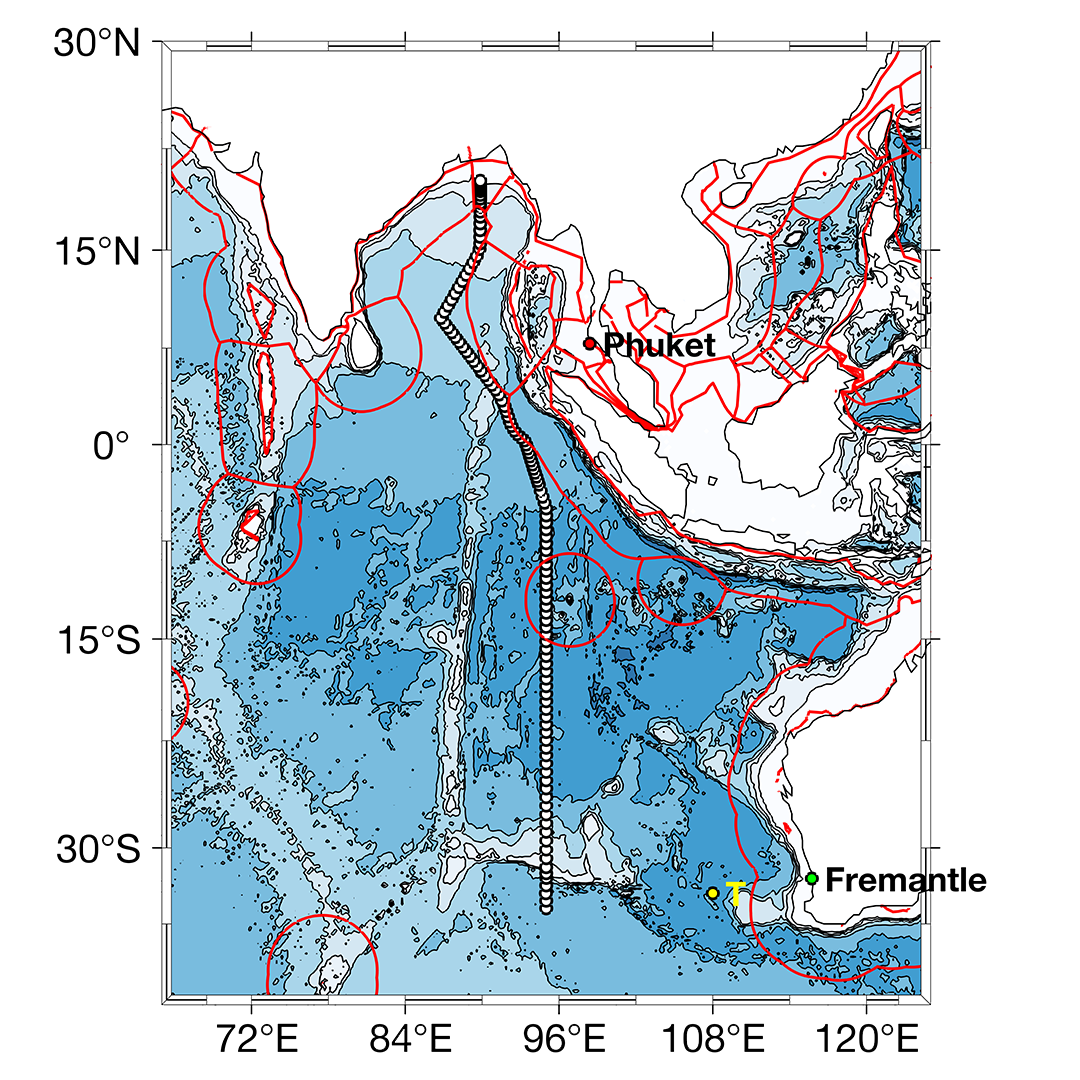
Map showing the stations planned for I09N 2025.
2025 GO-SHIP I09N Expedition Logs
First Floats
The first BGC-Argo floats have been deployed from the R/V Thompson I09NOn April 5th and 9th, we deployed our first two BGC-Argo floats! Everything went very smoothly for Floater the Explorer and Sakai Coho 2, adopted by Mission High School in San Francisco, CA and...
First week
Roxanne Mina reflects on Week 1 of her first research cruise experience.After going through two postponed GO-SHIP cruises, I’ve learned that observational oceanography can be unpredictable. Challenges from ship mechanical issues, cancellations due to suboptimal...
Shrinking Cups
Ever wondered what happens when you send a regular cup to the bottom of the ocean?🎯 What’s the Experiment? Oceanographers (a.k.a. sea scientists) sometimes attach styrofoam cups to a piece of high-tech equipment called a CTD rosette. This bad boy gets lowered into the...
Slight Delay
Due to a slight delay, Melissa Miller and some of the other scientists had a chance to explore Fremantle and the surrounding areaUnderway at last! After a slight delay, I09N is underway! All lab gear is onboard and secured for sea and the groups will be ready for...
Deploy, repeat…
A day in the life of a CTD WatchstanderBy the time I started my PhD program, I had decided that field work and chemistry labs weren’t for me. I was content to sit at home in Colorado and study the ocean from afar with my computer. My typical day at home is spent...
I09N Intro
Melissa Miller had a chance to decorate the floats for this expedition before they were loaded for shipment.Welcome to the I09N cruise blog! So many things will be happening on this cruise and GO-BGC floats are only a small part of that. We're sending 8 biogeochemical...

